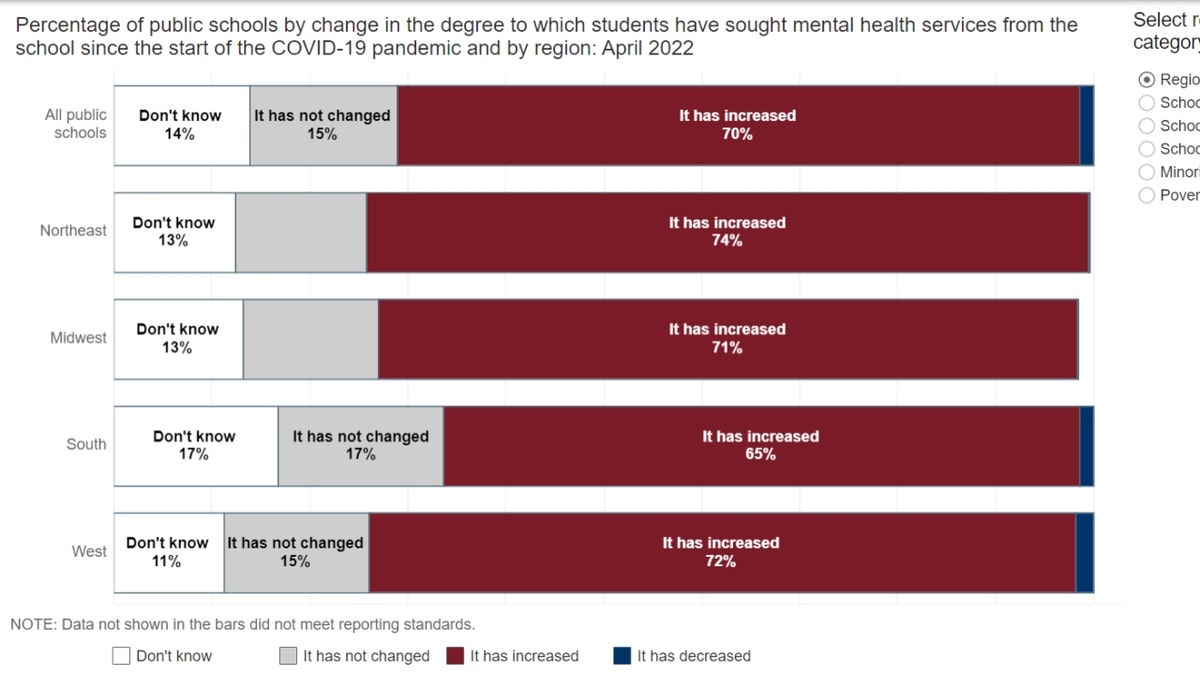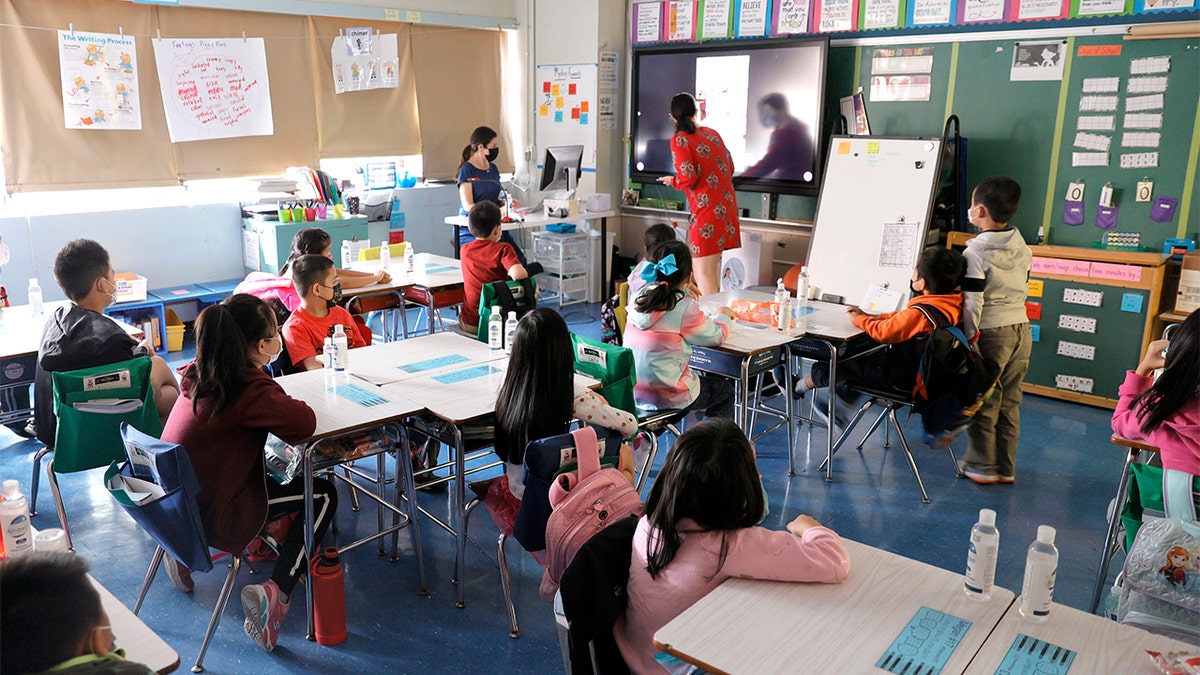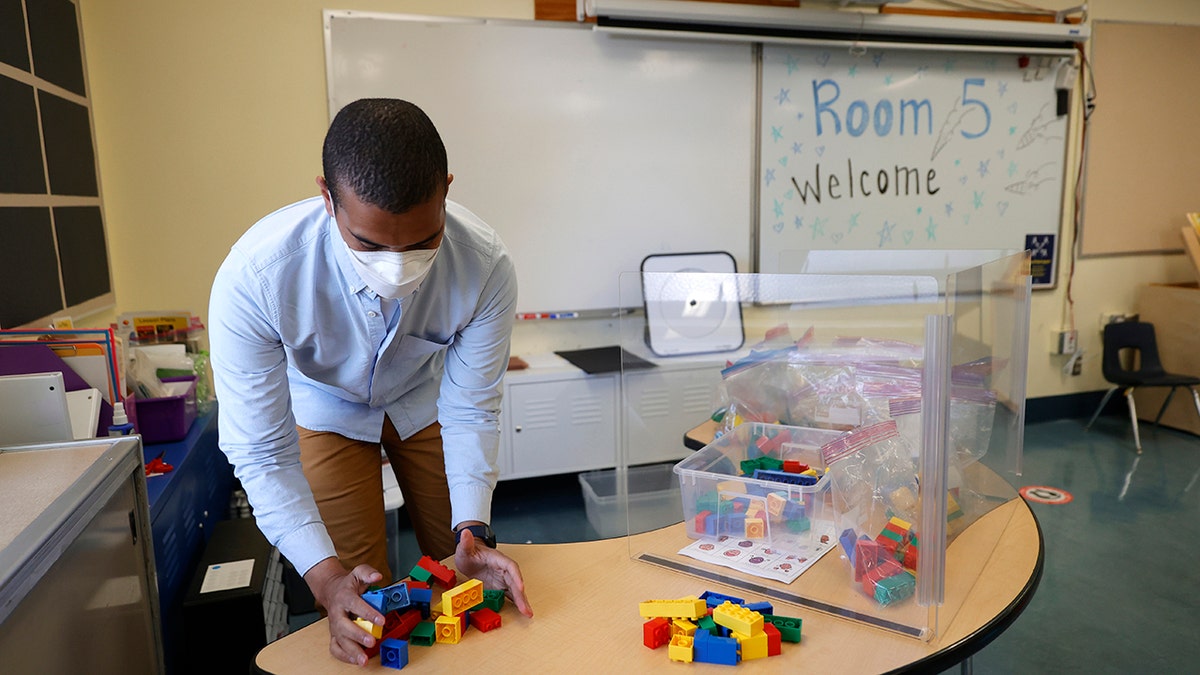Rep. Mo Brooks: Moral decline, mental health issues contributing to mass killings
Rep. Mo Brooks, R-Ala., discusses gun reform laws in the wake of the Uvalde school shooting and his GOP U.S. Senate runoff race.
Seventy percent of U.S. public schools have reported an increase in students seeking mental health services since the start of the COVID-19 pandemic, according to data released Tuesday.
More than three-quarters (76%) of public schools also reported an increase in concerns from staff regarding their students' depression, anxiety and trauma since the coronavirus pandemic began, according to data collected between April 12 and April 25 by the National Center for Education Statistics (NCES) within the U.S. Department of Education's Institute of Education Sciences (IES).

70% of U.S. public schools have reported an increase in students seeking mental health services since the start of the COVID-19 pandemic (NCES)
"When I took office, only 46[%] of schools were open for in-person learning. Now, more than 99[%] of schools and colleges are open, and our institutions are beginning to heal," Education Secretary Miguel Cardona said in a Tuesday statement in response to the report. "We know COVID-19 disrupted our schools and colleges, and this report serves as an important reminder of the work left to be done on the road to recovery."
He added that the Education Department's "urgency has shifted from getting institutions open to, now, keeping them open; providing the necessary academic, financial and mental health supports for students and families; and strengthening our K-12 and post-secondary education systems."

Co-teachers at Yung Wing School P.S. 124 Marisa Wiezel (who is related to the photographer) and Caitlin Kenny give a lesson to their masked students in their classroom on September 27, 2021, in New York City. (Photo by Michael Loccisano)
"Considering last week’s tragedy in Uvalde, Texas, this data also shines a light on a dark truth—the growing prevalence of gun violence in our schools," he said. "As I recently said to members of Congress, I am ashamed that we as a country are becoming desensitized to these horrific tragedies. As parents, leaders, and educators, protecting our children is more important than anything else. The time for thoughts and prayers alone is over. We need legislative action. We can do better, and we must do better."
COVID, MENTAL HEALTH AND SCHOOLS: OUR KIDS ARE SUFFERING AND IT'S NOT ALRIGHT
Additionally, only 56% of public schools moderately or strongly agreed that they are prepared to effectively provide adequate mental health services to all students in need, according to the survey of 830 public elementary, middle and high schools across the U.S.

Bryant Elementary School kindergarten teacher Chris Johnson sets up his classroom on April 09, 2021, in San Francisco, California. (Justin Sullivan)
Nearly all public schools (96%) reported that they provided mental health services to students during the 2021-2022 school year, but 88% did not strongly agree that they could provide adequate mental health services to all students in need, mostly citing an insufficient number of available, licensed mental health professionals and inadequate funding.
CLICK HERE TO GET THE FOX NEWS APP
"We've seen an increase in students seeking mental health services and in staff voicing concerns about students' mental health since the start of the COVID-19 pandemic," NCES Commissioner Peggy G. Carr said in a Tuesday statement. "The pandemic has taken a clear and significant toll on students' mental health. This snapshot of the pandemic's mental health impact is critical in informing the need for student mental health services."
Groups of students seeking mental health services most often were economically disadvantaged students — particularly on the West Coast; students with Individualized Education Programs (IEPs); and students with families with medical conditions that put them at high risk for adverse COVID-19 symptoms.





















